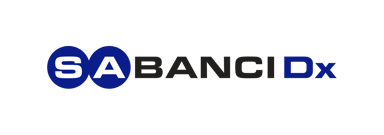Job Analysis
Organizations need to be sure about some issues to be successful. These include being confident that they clearly define each job position they announce, that their employees fully understand what the companies expect of them, and that every employee properly understands each task. Organizations use job analysis to achieve these goals.
The job analysis process focuses on understanding and evaluating in detail the requirements of jobs within an organization and the skills needed to achieve success. It is possible to consider it as the process of drafting a manual that directs recruitment, orientation, performance reviews, and even salary determination.
What Is Job Analysis?
Job analysis is the essential systematic process of understanding and resolving confusion in numerous job positions in an organization. This process includes systematically gathering and analyzing data about the responsibilities, tasks, duties, abilities, skills, and knowledge needed to do a job successfully.
In this context, the job analysis definition means more than just job descriptions. This situation is because this process helps to thoroughly examine how tasks are performed, the environment in which they are completed, and the characteristics required for improving job performance.
What Is Importance of Job Analysis?
In order to be successful in the business world, it is highly important to position the right people in the right jobs. Therefore, an effective job analysis is critical for any organization in many ways. Here are the reasons why job analysis is important:
1. Supporting Organizations on Legal and Regulatory Requirements
In the business world, there are important concepts such as job classification, fair labor standards, and equal employment opportunity (EEO). Organizations have legal and regulatory requirements that they must comply with. In this context, job analysis provides companies with support for legal compliance. It guarantees that job descriptions and specifications are legal and non-discriminatory.
2. Assisting Organizations in Proper Resource Allocation
To allocate resources more appropriately, organizations need to understand and analyze the unique requirements of each position through job analysis. This situation involves strategic workforce planning, budgetary allotments for development and training, and human resources.
3. Providing an Improved Organizational Structure
Job analysis helps create a well-defined organizational structure, with everyone in the organization comprehensively understanding job roles and responsibilities. This framework encourages openness, accountability, and efficient decision-making procedures.
4. Providing Clarity in Job Roles
Job analysis provides a clear definition of the duties and responsibilities required of every job position within an organization. This clarity reduces employees' hesitation and confusion about job expectations. In addition, it improves collaboration and workflow between teams.
5. Helping Employees to Accord with the Organization's Goals
Through accurate job role definition, job analysis assists in coordinating individual duties with the organization's overarching strategic goals. Achieving this alignment guarantees that personnel activities efficiently aid in accomplishing the objectives of that organization.
What Are the Objectives of Job Analysis?
The concept of job analysis is significant for the business world and is a concept that many organizations focus on today. That is because job analysis accomplishes many significant objectives that support organizational success. Here are some as follows:
Making Job Duties Clear
The job analysis's main objective is to find and define the precise tasks, responsibilities, and duties connected to every job role. Thanks to this clarity, employees will know exactly what is desired of them regarding their duties.
Identifying Job Requirements
One of the objectives of job analysis is to determine the abilities, skills, knowledge, and qualities needed for good job performance. This information creates the foundation for initiatives such as recruitment, selection, training, and development.
Providing Information to the HR Department
Job analysis supplies the necessary information for many human resources functions such as recruitment, selection, compensation management, career development, and training. It guarantees that reliable and truthful job-related information constitutes these human resources activities.
What Are the Benefits of Job Analysis?
Job analysis may seem helpful only for employers. However, contrary to this belief, job analysis is a process that has different benefits for both employers and employees. Therefore, it would be best to consider both of them when evaluating the benefits of job analysis.
The Advantages to Employers
Improving Recruitment and Selection Processes
Thanks to job analysis, employers can more easily find qualified candidates suitable for the job role they are looking for. With a well-conducted job analysis, it is possible to attract the attention and select the most qualified and equipped candidate for the vacant job position. That lowers turnover and recruitment expenses by guaranteeing an improved fit between applicants and job requirements.
Better Performance Management
Job analysis helps provide equitable and unbiased evaluations of performance by outlining precise performance criteria and job expectations. That paves the way for important issues such as spreading feedback culture and setting performance targets. Additionally, this is a valuable opportunity for employers to identify areas for improvement. In other words, it is critical to apply job analysis techniques for those who know the importance of performance management in an organization.
Targeted Training and Development Processes
It is possible to understand job requirements through job analysis. Understanding these requirements helps organizations create training processes that focus on certain skill gaps and needs for development. Working on this by focusing on the situation positively affects employee performance and job satisfaction. It also helps to increase employee productivity at work.
The Advantages to Employees
Clarity of Job Roles
With the help of job analysis, employees have clear information about their job roles and responsibilities. This clarity is essential for increasing job satisfaction and reducing role ambiguity. Additionally, it helps improve employee motivation.
Following Career Development Opportunities
One of the significant benefits of job analysis for employees is that it determines the qualifications and skills needed for job roles. That situation supports employees in following career advancement opportunities in the company. In this way, employees can make an effort to improve themselves and get the necessary skills for their career paths.
Ensuring Fair Compensation Practices
Job analysis links job qualifications, skills, and responsibilities to the structures of salary and thus supports equitable compensation practices. That paves the way for personnel to be compensated fairly according to the contributions and demands of their job roles.
How to Conduct Job Analysis?
Job analysis, essential for organizations, differs from a process that can be carried out randomly. In other words, it has job analysis steps that organizations must know. Here are the steps an organization wanting to conduct a job analysis can follow:
1. Gather Information Regarding a Job Position
Professionals can gather information by observing existing employees and interviewing them. They can have a conversation with them about their work and ask them to give them a clear explanation of what these employees do. They can review a variety of documentation that outlines the position in its present form. It is also possible to compare existing employee statements and actions to the current job description to confirm that all information is accurate. These professionals might track the results by organizing them according to job positions or departments.
2. Analyze Every Competency and Task
Once professionals identify which competencies are required to perform a job, they can assign difficulty levels to each task and skill group. They must determine which job positions need an advanced level of expertise. Additionally, they should pay attention to which skills require more training and which are at entry level. They may gain a different perspective on what they thought was the most important component of a job role.
3. Review Industry Standards
Professionals can research their roles in job analysis to ensure they fit with the existing workforce. Checking results with data from professional associations and government information is one way. Also, they can speak with subject specialists, who can outline the required steps to complete a task. It is important to note that it is possible to contact other organizations and then compare the data.
4. Re-examine Job Descriptions and Standards
Professionals can first identify the most significant abilities required to complete a task. Then, based on their work-related observations and employee feedback, they can list all the related tasks and skills. They can use this to re-examine a current job description or write a new one to match their findings. As they conduct their research, they can also incorporate expectations based on professional advice they found.
5. Take Advantage of the Information to Make Some Changes
Professionals can evaluate the organization in general and then identify the appropriateness of task allocations and their compatibility with their job analysis. If they realize that work belonging to one department is better suited to a different one, transferring these duties to another job position would be correct. Additionally, suppose that they realize that one department has a higher workload than the others. In that case, it is possible to determine how to redistribute these responsibilities using the data provided by job analysis.
What Are Methods of Job Analysis?
There are many job analysis methods, depending on the nature of the business and the information required. Here are some of the most widely used methods of job analysis:
Interviews
Interviewing the employees responsible for the job or the supervisors of them is necessary to learn more about the duties, responsibilities, tasks, and results of the work.
Observations
Paying attention to the observation method of job analysis is vital for organizations aiming for a good result. That is because real-time observation of the job can provide crucial insights into relevant skills, abilities, tasks, processes, and how designated time and resources can be used efficiently. This job analysis observation method can be helpful for extremely regimented and repetitive jobs.
Surveys
Employers can conduct surveys to identify the frequency of completion of certain tasks and the skills required to complete those tasks. These surveys can be open-ended questions or organized questionnaires in which personnel answer issues about jobs through scales.
Work Diary or Log
A work diary, also known as a log, is a record employees keep daily or weekly that details the tasks' timing and frequency. Examining these logs, discovering patterns, and converting them into job descriptions is a task undertaken by HR. Since this method produces large amounts of data, it takes a lot of work to analyze in general.
Conclusion
Now, you have discovered the definition of job analysis, the importance of job analysis in an organization, and many other valuable topics within the scope of job analysis. In this content, which you can consider as a comprehensive guide, you learned how to conduct a job analysis to benefit your company and employees.
In addition to an important issue such as job analysis, you need to learn more about human resources to succeed in business. If you want to improve yourself and your organization along your career path, we invite you to check out Hirex for similar topics!
Contents
Get a demo
- Quickly find top candidates with smart application management
- Improve team collaboration using built-in communication and workflows
- Offer a smooth candidate experience to strengthen your employer brand
- Count on 24/7 support for a hassle-free hiring process
- Quickly find top candidates with smart application management
- Improve team collaboration using built-in communication and workflows
- Offer a smooth candidate experience to strengthen your employer brand
- Count on 24/7 support for a hassle-free hiring process
"We truly felt the speed difference. Everything was smoother, and candidate feedback was much more positive. It made our jobs easier."

Trusted by 100+ teams
Get Informed,F.A.Q.
Revolutionize your hiring process with our transformative Applicant Tracking System (ATS.)
Suggested keywords
What is Cultural Fit?
Let's talk numbers - 89% of employers put cultural fit at the top of their hiring checklist. Pretty huge. But wait a second... what exactly does cultural fit mean in today's fast-moving workplace?The ...
Employee NPS Benchmarks
An Employee NPS benchmark is basically a way to see how your company’s employee satisfaction stacks up against others. It helps turn your eNPS score into something useful by giving it context. 📌You'r...
Salary Benchmarking
Salary benchmarking is basically figuring out if what you're paying your team makes sense compared to what others are offering for similar roles. It’s like checking the going rate before you buy somet...















